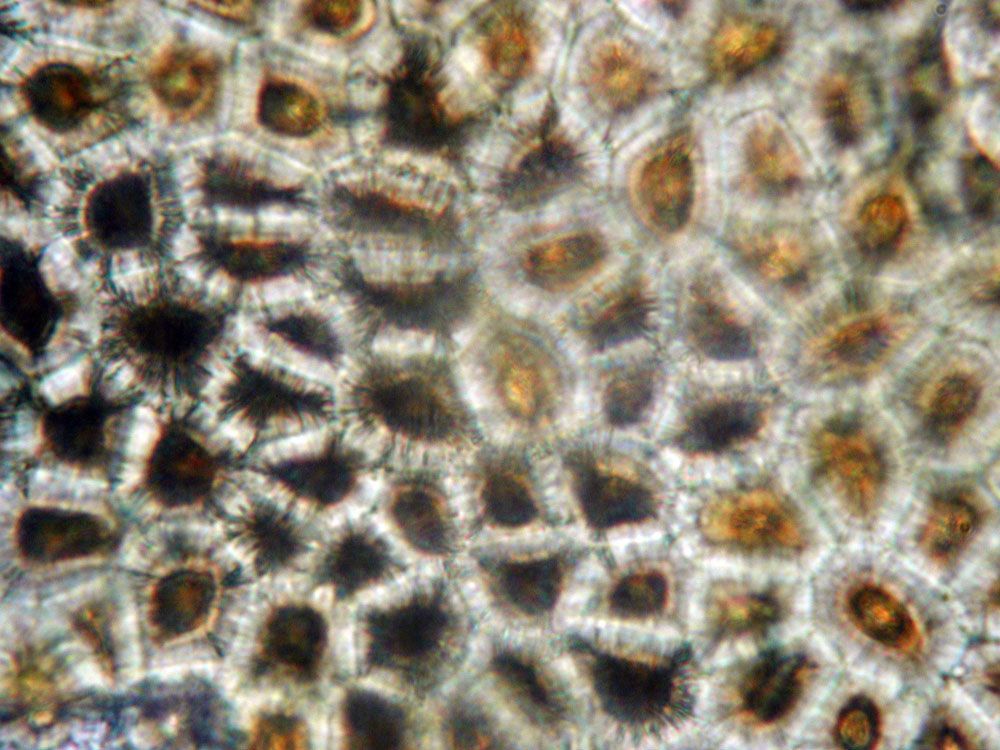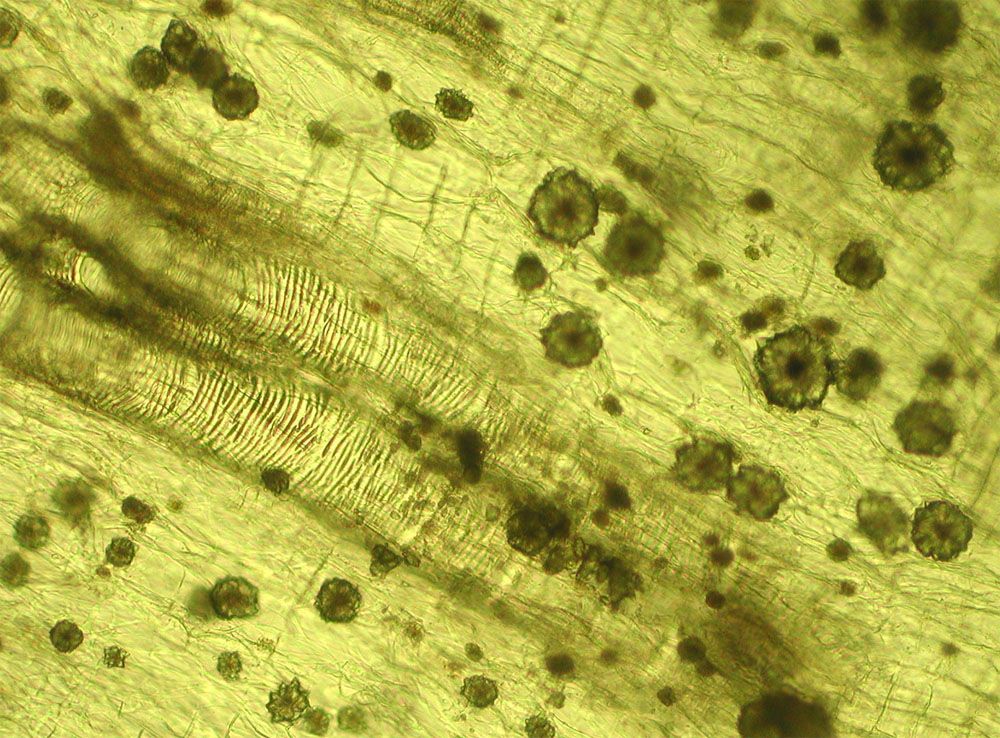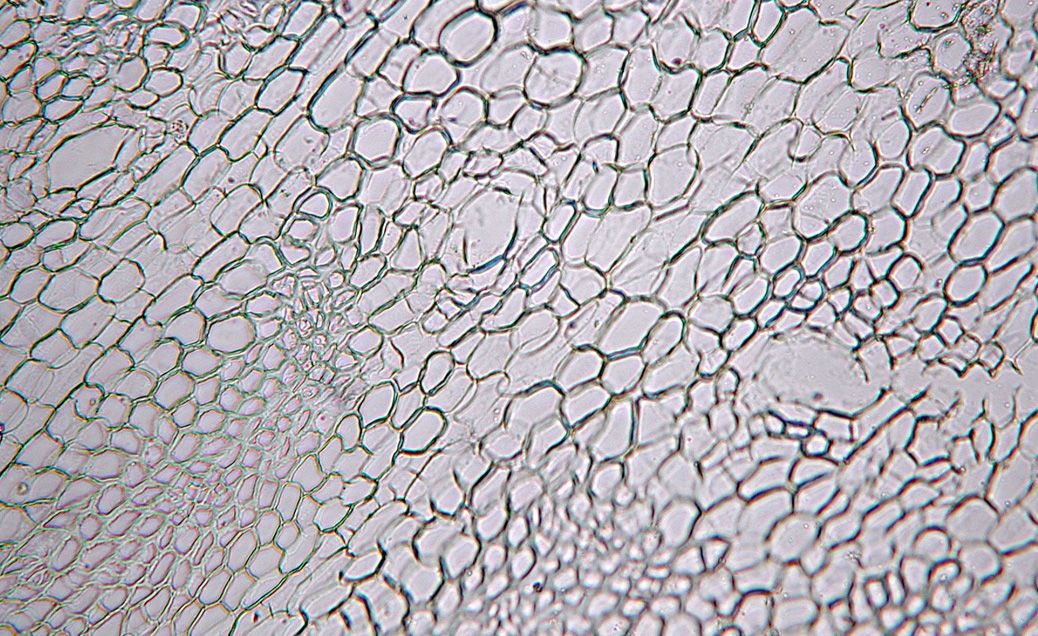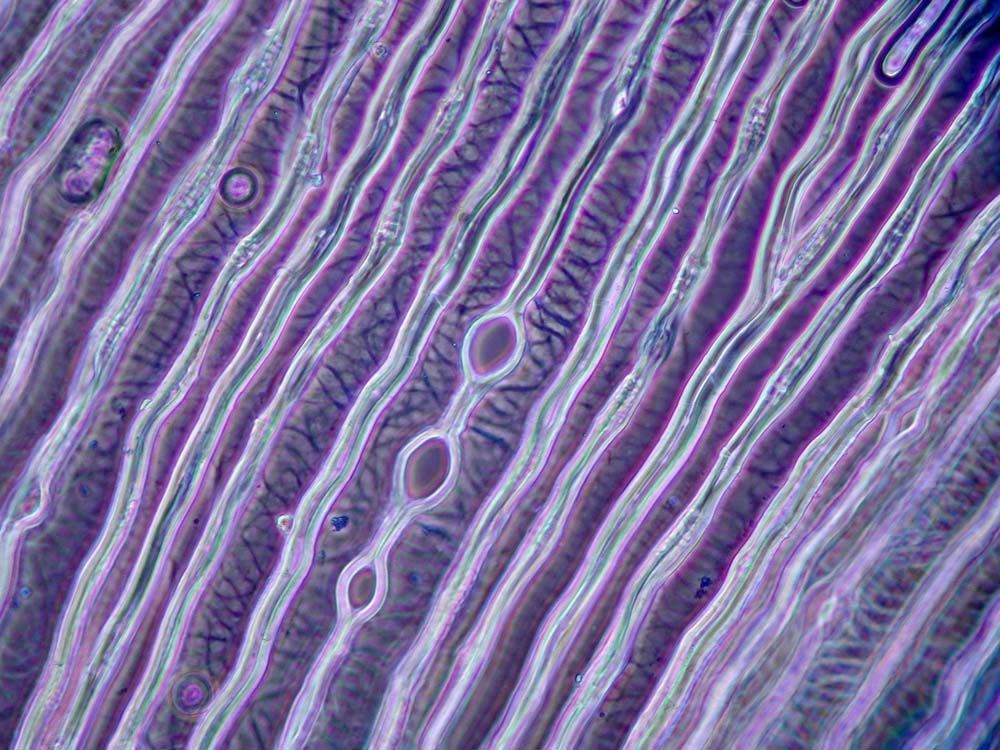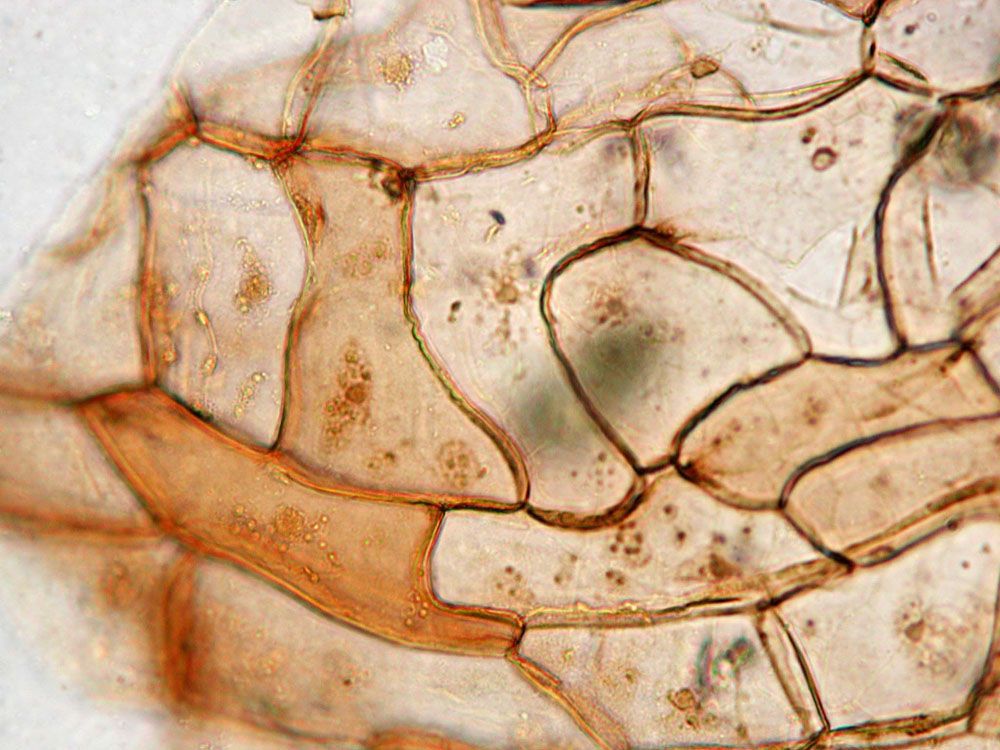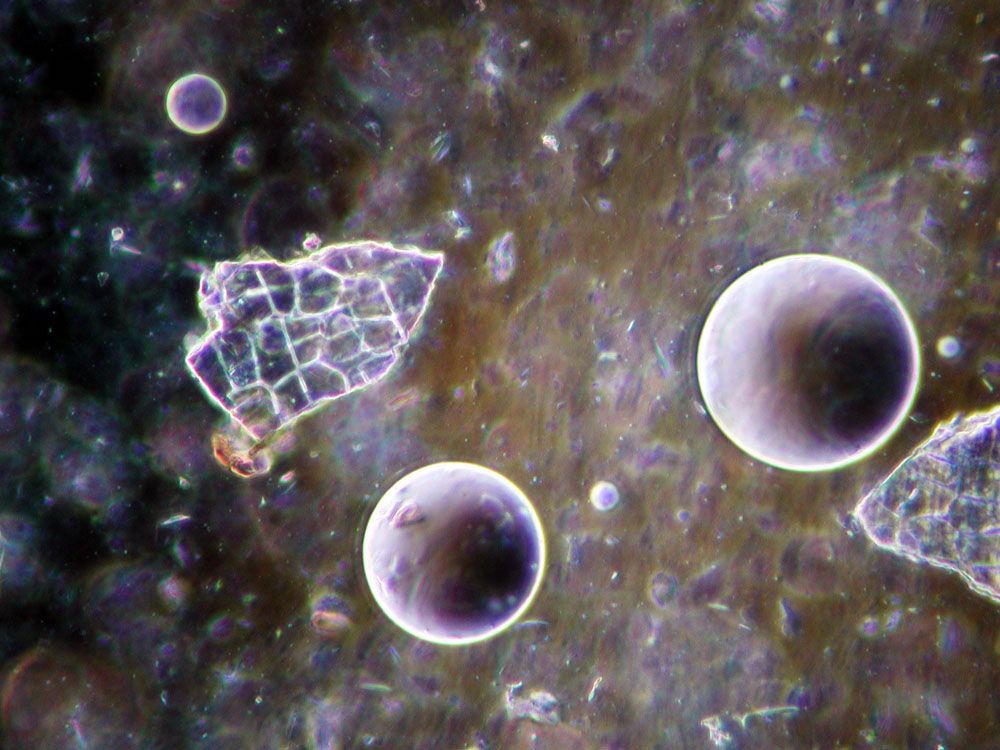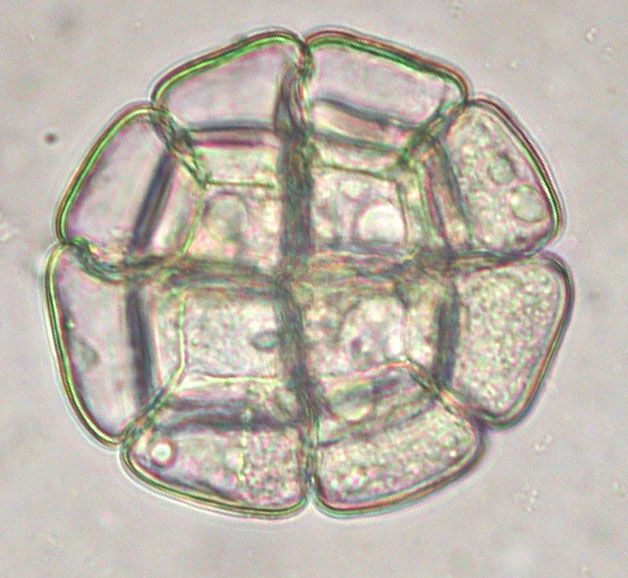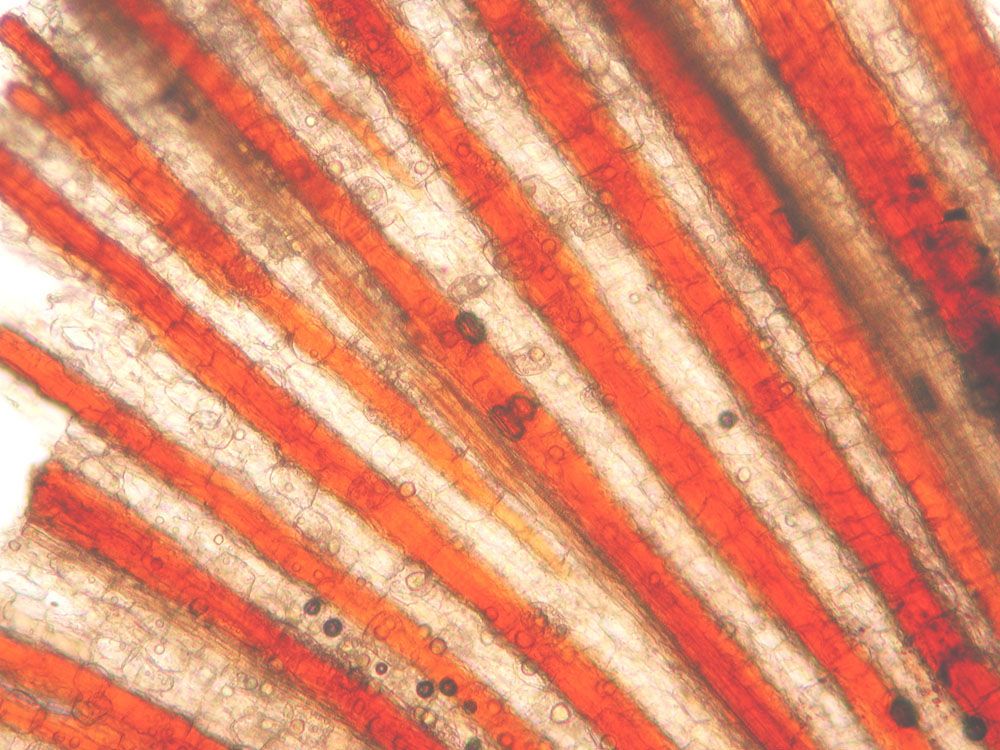Dubious pseudoscience – on the alleged hepatotoxicity of Chinese herbal medicines*
*Slightly edited version of an article from Deutsche Zeitschrift für Akupunktur 2016;59(4): 33-35.
Translated by Dough Chick
Rolf Teschke has written several articles in international journals on the alleged hepatotoxicity of Chinese herbal medicines. Teschke often exhibited as a critical scientist who has demanded a careful assessment of causality in cases of suspected drug-induced liver injury. However, in the case of Chinese herbal medicines all principles are forgotten. A review which claims an established hepatotoxicity by means of the CIOMS scale for 28 of 57 herbs or herbal mixtures is partly based on scientifically worthless case reports and insupportable causality statements.
In recent years, a circle of authors around the first author Rolf Teschke has written several articles in international journals on the alleged hepatotoxicity of Chinese herbal medicines. Rolf Teschke often exhibited as a critical scientist who has repeatedly demanded a careful assessment of causality in cases of suspected drug-induced liver injury by use of the CIOMS scale. However, in the case of Chinese herbal medicines all principles are forgotten. A review which claims an established hepatotoxicity by means of the CIOMS scale for 28 of 57 herbs or herbal mixtures is partly based on scientifically worthless case reports and insupportable causality statements. In some cases, a CIOMS test was not even conducted; nevertheless, CIOMS values were planted in those cases. But even these values do not stand up to scrutiny by any means. Moreover, the authors incorrectly assign herbs which are used exclusively in Western medicine to traditional Chinese herbal medicine. With regards to two "Kampo" medicines adulterated with the anorectic N-nitroso-fenfluramine, the hepatotoxicity is attributed to the herbal ingredients without any valid reason; although, on the basis of studies and a statement from the Japanese Ministry of Health, the chemical admixture is responsible for this.
Conclusion: The authors must be presumed as exhibiting a conscious action and a tendentious attitude. The review falls far below the usual standard of the authors. Despite this, the possible hepatotoxicity of Chinese herbal medicines is an important and serious issue whose clarification is not supported by this work
Keywords: Traditional Chinese medicine, Chinese herbal medicine, Chinese herbs, hepatotoxicity, liver injury, scientific dishonesty
In recent years, a number of articles from a certain group of authors on the hepatotoxicity of Chinese herbal medicines have appeared in various international journals. The respective first author Rolf Teschke, has often distinguished himself as a meticulous scientist, who in approximately twenty publications, together with several co-authors, has repeatedly called for a precise determination of causality in cases of suspected drug-induced liver injury. He insists on applying the validated CIOMS (Council for International Organizations of Medical Sciences) scale [1] for which, together with the author Danan, he has issued an update [2].
Consequently, he rejected the attribution of hepatotoxicity to Cimicifuga racemosa by the US Pharmacopoeia with the reasoning that the agency had used an unsuitable scale for evaluating various case reports [3]. Similarly, he analysed 26 cases of alleged kava kava hepatotoxicity, in which the German Federal Institute for Drugs and Medical Devices (BfArM) had supposed a probable causality and used this as rationale for a ban on the drug. He and his co-authors were only able to confirm the causality as probable in one case and as possible in two other cases [4].
For several years now, Rolf Teschke, together with his co-authors, has developed a predilection for Chinese medicine, even though, according to his own statement, it doesn’t fit into his medical and scientific worldview. Since 2012, he has written at least five articles about the hepatotoxicity of alleged traditional Chinese herbal medicines, mostly with co-authors C. Frenzel, J. Schulze and A. Wolff. In doing so, the same litany of various herbal medicines and herbal combinations are called up again and again applying the "TCM" label equally to folk medicines, substances from traditional Korean medicine, Kampo medicine, some U.S. food supplements, which contain a variety of ingredients, occasionally including Chinese herbs, and sometimes even purely Western drugs. However, relating to this standard assignment he seems to have forgotten all principles of critical causality assessment. Henceforth, everything with the above-mentioned spectrum in terms of hepatotoxicity is picked up, partially due to lack of translation, using solely the contents of abstracts.
However, among these different reviews, there is one that stands out [5]. The authors claim to present "for the first time, a compressed tabular summary of all potentially hepatotoxic TCM herbs". A further table is said to contain a causality assessment applying the CIOMS scale as well as the results of positive re-exposure tests. Although the compilation hardly differs from previous articles, one might be curious about the results of the causality assessment that the critical authors will come to. The findings are summarised in the abstract of the article, which is reproduced below:
- Abstract: Traditional Chinese Medicine (TCM) with its focus on herbal use became popular worldwide. Treatment was perceived as safe, with neglect of rare adverse reactions including liver injury. To compile worldwide cases of liver injury by herbal TCM, we undertook a selective literature search in the PubMed database and searched for the items Traditional Chinese Medicine, TCM, Traditional Asian Medicine, and Traditional Oriental Medicine, also combined with the terms herbal hepatotoxicity or herb induced liver injury. The search focused primarily on English-language case reports, case series, and clinical reviews. We identified reported hepatotoxicity cases in 77 relevant publications with 57 different herbs and herbal mixtures of TCM, which were further analysed for causality by the Council for International Organizations of Medical Sciences (CIOMS) scale, positive reexposure test results, or both. Causality was established for 28/57 different herbs or herbal mixtures, Bai Xian Pi, Bo He, Ci Wu Jia, Chuan Lian Zi, Da Huang, Gan Cao, Ge Gen, Ho Shou Wu, Huang Qin, Hwang Geun Cho, Ji Gu Cao, Ji Xue Cao, Jin Bu Huan, Jue Ming Zi, Jiguja, Kudzu, Ling Yang Qing Fei Keli, Lu Cha, Rhen Shen, Ma Huang, Shou Wu Pian, Shan Chi, Shen Min, Syo Saiko To, Xiao Chai Hu Tang, Yin Chen Hao, Zexie, and Zhen Chu Cao. In conclusion, this compilation of liver injury cases establishes causality for 28/57 different TCM herbs and herbal mixtures, aiding diagnosis for physicians who care for patients with liver disease possibly related to herbal TCM.
Thus, for 28 out of 57 published herbal medicines or herbal combinations, causality is deemed to be justified. Surprisingly, among these are herbs which one would hardly expect, such as gan cao (Glycyrrhizae Radix) and bo he (Menthae haplocalycis Herba). Gan cao is the most commonly used herb in Chinese herbal medicine. If it has the potential for hepatotoxicity, one would expect that after the billions of times this herb has been used, a large number of case reports should exist. In Teschke et al., only one source is found, the article by Yuen and co-workers [6]. In addition, this paper also appears to be able to demonstrate the hepatotoxicity of 5 further herbs, namely chuan lian zi (Toosendan Fructus), da huang (Rhei Radix et Rhizoma), ji gu cao (Abri Herba), jue ming zi (Sennae Folium) and ze xie (Alismatis Rhizoma).
Let us take a detailed look at this abundant source [6]. It is a paper about 7 cases of liver reactions from Hong Kong. First of all, it is conspicuous that it concerns a particular clientele, namely patients with chronic hepatitis B. However, an exacerbation of hepatitis B as the cause of liver injury should be excluded by determining the number of HBV DNA copies.
Let us take case number 4 and try to apply the CIOMS scale to it. A 45-year-old patient with HBe-AG positive chronic hepatitis B had an ALT of 70 U/l, an AST of 44 U/l, an alkaline phosphatase of 102 U/l, and a GGT of 180 U/l four weeks before being hospitalised (lab-specific reference values were not provided). One month later, he began taking the formula "Lingyang Qingfei" as granules. He was taking it for its cooling effect on the lungs, and pharyngeal problems. He took 6g, 3 times per day for 3 months, until the onset of jaundice. His bilirubin level was now 288μM, ALT was 414, AST was 495, alkaline phosphatase was 135, and GGT was 178. Abdominal ultrasound showed a slightly cirrhotic liver, an enlarged spleen, and ascites. The liver function improved after discontinuing the Chinese herbal medicine and after 3 months, took on a static course with bilirubin at 94 (the transaminase progress was not reported). The patient was placed on the waiting list for a liver transplant.
Now on to the CIOMS scale. Since the patient suffers from chronic hepatitis B with liver cirrhosis, the applicability of this scale is dubious. If one ignores this, a hepatocellular type of liver injury is to be considered, since the cholestasis enzymes are only slightly, or not at all, elevated. The designated procedure for this purpose is detailed in the following:
- Firstly, the time period from medication to the onset of liver injury is to be checked for plausibility. This time interval just falls within a range of 90 days, which yields 2 points.
- The decrease in ALT must be assessed as to whether it is above or less than 50 % within 30 days. The ALT course is not documented (after 3 months, the bilirubin level is still around one third of the peak value), yielding 0 points.
- Significant alcohol consumption should be excluded, yielding 0 points, the patient is under 55 years old, also yielding 0 points.
- The concurrent medication (including the additional formula ingredients) needs to be examined for a possible cause of the liver reaction with regard to its chronological course. No mention is made of these, yielding 0 points.
- The exclusion of other diseases must be assessed. Group 1: Hepatitis A, B, C; through hepatobiliary sonography/colour Doppler of the liver vessels/endosonography/CT/MRI identifiable causes; alcoholism; recent acute hypotension (6 causes).
Group 2: Exclusion of viral infections CMV, EBV, HEV, HSV, VZV.
By means of the exclusion criteria from the case study, which was mentioned at the beginning of the article, 4 diagnoses from group 1 are excluded, which yields 0 points. From group 2, only HEV infection is excluded. Here there is only one point for the exclusion of all diagnoses in this group, thus, resulting in a total of 0 points.
- Existing information regarding a known hepatotoxicity of the particular substance: If published, yielding 1 point. In this case, 3 "hepatotoxic" formula components were identified for which liver toxicity is allegedly established. These are cu da huang (prepared Rhei Radix et Rhizoma), gan cao (Glycyrrhizae Radix) and bo he (Menthae haplocalycis Herba). However, no references are provided. Instead of citing evidence for Mentha hapocalyx, several cases from Western literature on Pennyroyal oil (Mentha pulegium) are cited which is apparently due to the lack of documentation for bo he hepatotoxicity.
A proven hepatotoxicity for gan cao would be almost sensational. Where the authors obtained this information remains unknown. Bensky, Clavey, and Stöger [6] mention jaundice as a result of da huang overdose (and only then), and liver cirrhosis after long-term use; however, not even the otherwise very critical monograph "Rheum palmatum L. and Rheum officinale BAILLON, radix" of the European Medicines Agency [7] mentions a hepatotoxicity. An overdose at the stated daily dose for the formula with 12 ingredients can be excluded, resulting in 0 points.
In summary, therefore, just 2 points coincide with the CIOMS scale. According to CIOMS, therefore, a causal link is "unlikely". The authors of the case study describe the link between the formula and the liver reaction as "likely", not explicitly explaining which of the three herbs identified is responsible or whether several of them are. What is not taken into account is that nothing is known about the other ingredients in the formula, the identity of the indicated drugs is not verified, and that contaminants or even deliberate adulterations were not excluded. From a scientific perspective, using the case report for the identification of hepatotoxic drugs is out of the question. The other cases are not much better, they score at most 3 points, which formally brings causality into the realm of the "possible" - albeit with all the mentioned restrictions that finally rule out evidence of causality.
And now comes the article by Teschke and co-authors. In case 4, a CIOMS score of "6-8" has been tagged on. How did this come about? In their table, the herbs are listed under the heading "Reported causality assessment by CIOMS in cases of herbal hepatotoxicity by TCM". In the article by Yuen et al. [6], however, there is no mention of the CIOMS scale. Instead, their authors, at their own discretion, have categorised the causality as "definite" for 3 of the 7 cases, "probable" in two cases, and "possible" in a further two cases. Teschke and co-authors have obviously used these ratings unchecked in their article and added the CIOMS scores for these evaluations: for "probable" 6 to 8 (therefore, a range rather than a fixed value was given), for "highly probable" over 8, and for "possible" 3 to 5 points. With regards to another publication they proceeded in the same way.
What is the correct description for such an approach? Deception? Scientific fraud? Probably not coincidentally the authors have avoided mentioning under the method section how they arrived at their CIOMS scores. By this sleight of hand, they have tried to generate evidence from scientifically worthless data. On top of that, from one case report, they have simultaneously created up to three "hepatotoxic" herbs, as if the respective case report had concurrently confirmed causality for all these herbs with "known hepatotoxicity".
It is up to the reader’s imagination, what causes sometimes highly meticulous scientists to forget all their principles. Mr Teschke has already been the subject of an editorial and article in the German Journal for Acupuncture (Deutschen Zeitschrift für Akupunktur), which was about the different standards for dealing with Chinese herbal medicine compared to other medicines [8, 9].
The review contains other blatant errors. We previously pointed out to the authors that Angelica archangelica is not a Chinese herb, but a herb used in Western medicine [10]. The authors however persist with their error. A search in the Chinese literature database "Chinese Academic Journals" (CAJ) found few articles of botanical content related to Angelica archangelica. In one article, it is pointed out that it is used in foods, beverages and in Kashmiri folk medicine. In an article comparing it to Chinese A. sinensis, the samples batches of A. archangelica came from Poland. In a pharmaceutical context, it is featured in an article from the journal Gouwai Yiyao (Zhiwu Yao Fence) [World Notes on Plant Medicine], where an article from Finland is referenced [11]. An application in the context of Chinese medicine could not be found.
In an inauguration, Teschke and co-workers have assigned the plant Germander (Teucrium chamaedrys) as belonging to TCM. In a recent work by the first author and co-authors [12], this plant is repeatedly referred to as a "TCM herb" and they have devoted a whole section on the pathomechanism of its hepatotoxicity. A search in the CAJ provided only one paper, which is a brief note on an article from the Canadian Medical Association Journal [13].
Not all errors and weaknesses in the present work can be covered here, but one point still has to be mentioned. The authors also include the "Kampo" herbal weight loss medicines Chaso and Onshido, for which 156 cases of liver toxicity occurred in Japan until they were banned. Both herbal formulas were adulterated with N-nitroso-fenfluramine (a derivative of the anorectic fenfluramine). However, the above-mentioned authors see the cause of the liver toxicity not in these adulterants, but in the herbs themselves: “(The) hepatotoxic property (of N-nitroso-fenfluramine) was not established. N-nitroso-fenfluramine therefore is merely an adulterant and not related to liver injury.” Regarding this, they refer to the paper from Adachi et al. [14] and turn their statement around to come to the opposite conclusion. Adachi et al. state: "All the herbal components labelled on these products have not been reported to be hepatotoxic. ... N-nitroso-fenfluramine is a possible hepatotoxic ingredient."
The Japanese Ministry of Health, Labour and Welfare characterised N-nitroso-fenfluramine, on the basis animal experiments as the hepatotoxic agent [15], which was also found to be an ingredient of various other weight loss remedies and resulted in liver injury, including several hundred cases of liver transplants and deaths. It must really be regarded as malicious when Mr Teschke and Co. try to put the blame on the Chinese herbs.
Conclusion
The work in hand is an affront to science and remains far below the usual standard of its authors. Since they are not freshman interns, the authors probably know what they are doing when manipulating data and twisting facts. They must be presumed as having a biased attitude. The work is useless for the causality assessment of hepatotoxicity of Chinese herbal medicines. Serious scientists should consider whether they provide their name as a co-author to Mr Teschke.
In spite of all criticism of scientific dishonesty, it cannot be overlooked that liver reactions are a serious issue for Chinese herbal medicine. The CTCA (Centrum für Therapiesicherheit in der Chinesischen Arzneitherapie, Center for Safety of Chinese Herbal Medicines) has recently published a newsletter which identifies herbs whose hepatotoxicity has been adequately documented and which should deserve special attention [16].
Sources:
1. Danan G, Benichou C. Causality assessment of adverse reactions to drugs--I. A novel method based on the conclusions of international consensus meetings: application to drug-induced liver injuries. J Clin Epidemiol 1993;46:1323-1330
2. Danan G, Teschke R. RUCAM in drug and herb induced liver injury: The update. Int J Mol Sci 2016;17:14
3. Teschke R, Schulze J. Suspected herbal hepatotoxicity: requirements for appropriate causality assessment by the US Pharmacopeia. Drug Saf 2012;35:1091-1097
4. Teschke R, Fuchs J, Bahre R, Genthner A and Wolff A. Kava hepatotoxicity: comparative study of two structured quantitative methods for causality assessment. J Clin Pharm Ther 2010;35:545-563
5. Teschke R, Zhang L, Long H, et al. Traditional Chinese Medicine and herbal hepatotoxicity: a tabular compilation of reported cases. Ann Hepatol 2015;14:7-19
6. Yuen MF, Tam S, Fung J, Wong DK, Wong BC and Lai CL. Traditional Chinese medicine causing hepatotoxicity in patients with chronic hepatitis B infection: a 1-year prospective study. Aliment Pharmacol Ther 2006;24:1179-1186
7. Committee on Herbal Medicinal Products (HMPC). Community herbal monograph on Rheum palmatum L. and Rheum officinale Baillon, Radix: European Medicines Agency, http://www.ema.europa.eu/docs/en_GB/document_library/Herbal_-_Community_herbal_monograph/2009/12/WC500018401.pdf, 2007
8. Ots T. Wissenschaftler, Theologen, Esoteriker, Atheisten, Agnostiker und das schlechte Gewissen mancher Schulmediziner. Dt Zschr Akupunktur 2014;57(4):4-5
9. Wiebrecht A. Ist bei einer Risikobeurteilung der Chinesischen Medizin die Einhaltung wissenschaftlicher Standards überflüssig? Dt Zschr Akupunktur 2014;57(4):16-19
10. Wiebrecht A, Kalg A. Herbal hepatotoxicity - an update on traditional Chinese medicine preparations (letter). Aliment Pharmacol Ther 2014;40:737-738
11. Liu DY. [Structure determination of coumarinic ingredients isolated from Angelica archangelica root] (Chinese). Gouwai Yiyao (Zhiwu Yao Fence) [World Notes on Plant Medicine] 1990;5:215-216
12. Teschke R, Larrey D, Melchart D and Danan G. Traditional Chinese Medicine (TCM) and herbal hepatotoxicity: RUCAM and the role of novel diagnostic biomarkers such as MicroRNAs. Medicines 2016;3:18
13. Li CM. [The shi can xiang ke plant Germander can cause hepatitis] (Chinese). Guowai Yixue (Zhongyi Zhongyao Fence) [Foreign Medical Sciences (TCM Volume)] 1997;19:16
14. Adachi M, Saito H, Kobayashi H, et al. Hepatic injury in 12 patients taking the herbal weight loss AIDS Chaso or Onshido. Ann Intern Med 2003;139:488-492
15. Nakadai A, Inagaki H, Minami M, et al. [Determination of the optical purity of N-nitrosofenfluramine found in the Chinese slimming diet] (Japanese). Yakugaku Zasshi 2003;123:805-809
16. Center for Safety of Chinese Herbal Medicines, http://www.ctca.de/index.php/en/information-for-professionals/liver-toxicity, 2016
*Slightly edited version of an article from Deutsche Zeitschrift für Akupunktur 2016;59(4): 33-35.
Translated by Dough Chick
Rolf Teschke has written several articles in international journals on the alleged hepatotoxicity of Chinese herbal medicines. Teschke often exhibited as a critical scientist who has demanded a careful assessment of causality in cases of suspected drug-induced liver injury. However, in the case of Chinese herbal medicines all principles are forgotten. A review which claims an established hepatotoxicity by means of the CIOMS scale for 28 of 57 herbs or herbal mixtures is partly based on scientifically worthless case reports and insupportable causality statements.
In recent years, a circle of authors around the first author Rolf Teschke has written several articles in international journals on the alleged hepatotoxicity of Chinese herbal medicines. Rolf Teschke often exhibited as a critical scientist who has repeatedly demanded a careful assessment of causality in cases of suspected drug-induced liver injury by use of the CIOMS scale. However, in the case of Chinese herbal medicines all principles are forgotten. A review which claims an established hepatotoxicity by means of the CIOMS scale for 28 of 57 herbs or herbal mixtures is partly based on scientifically worthless case reports and insupportable causality statements. In some cases, a CIOMS test was not even conducted; nevertheless, CIOMS values were planted in those cases. But even these values do not stand up to scrutiny by any means. Moreover, the authors incorrectly assign herbs which are used exclusively in Western medicine to traditional Chinese herbal medicine. With regards to two "Kampo" medicines adulterated with the anorectic N-nitroso-fenfluramine, the hepatotoxicity is attributed to the herbal ingredients without any valid reason; although, on the basis of studies and a statement from the Japanese Ministry of Health, the chemical admixture is responsible for this.
Conclusion: The authors must be presumed as exhibiting a conscious action and a tendentious attitude. The review falls far below the usual standard of the authors. Despite this, the possible hepatotoxicity of Chinese herbal medicines is an important and serious issue whose clarification is not supported by this work
Keywords: Traditional Chinese medicine, Chinese herbal medicine, Chinese herbs, hepatotoxicity, liver injury, scientific dishonesty
In recent years, a number of articles from a certain group of authors on the hepatotoxicity of Chinese herbal medicines have appeared in various international journals. The respective first author Rolf Teschke, has often distinguished himself as a meticulous scientist, who in approximately twenty publications, together with several co-authors, has repeatedly called for a precise determination of causality in cases of suspected drug-induced liver injury. He insists on applying the validated CIOMS (Council for International Organizations of Medical Sciences) scale [1] for which, together with the author Danan, he has issued an update [2].
Consequently, he rejected the attribution of hepatotoxicity to Cimicifuga racemosa by the US Pharmacopoeia with the reasoning that the agency had used an unsuitable scale for evaluating various case reports [3]. Similarly, he analysed 26 cases of alleged kava kava hepatotoxicity, in which the German Federal Institute for Drugs and Medical Devices (BfArM) had supposed a probable causality and used this as rationale for a ban on the drug. He and his co-authors were only able to confirm the causality as probable in one case and as possible in two other cases [4].
For several years now, Rolf Teschke, together with his co-authors, has developed a predilection for Chinese medicine, even though, according to his own statement, it doesn’t fit into his medical and scientific worldview. Since 2012, he has written at least five articles about the hepatotoxicity of alleged traditional Chinese herbal medicines, mostly with co-authors C. Frenzel, J. Schulze and A. Wolff. In doing so, the same litany of various herbal medicines and herbal combinations are called up again and again applying the "TCM" label equally to folk medicines, substances from traditional Korean medicine, Kampo medicine, some U.S. food supplements, which contain a variety of ingredients, occasionally including Chinese herbs, and sometimes even purely Western drugs. However, relating to this standard assignment he seems to have forgotten all principles of critical causality assessment. Henceforth, everything with the above-mentioned spectrum in terms of hepatotoxicity is picked up, partially due to lack of translation, using solely the contents of abstracts.
However, among these different reviews, there is one that stands out [5]. The authors claim to present "for the first time, a compressed tabular summary of all potentially hepatotoxic TCM herbs". A further table is said to contain a causality assessment applying the CIOMS scale as well as the results of positive re-exposure tests. Although the compilation hardly differs from previous articles, one might be curious about the results of the causality assessment that the critical authors will come to. The findings are summarised in the abstract of the article, which is reproduced below:
- Abstract: Traditional Chinese Medicine (TCM) with its focus on herbal use became popular worldwide. Treatment was perceived as safe, with neglect of rare adverse reactions including liver injury. To compile worldwide cases of liver injury by herbal TCM, we undertook a selective literature search in the PubMed database and searched for the items Traditional Chinese Medicine, TCM, Traditional Asian Medicine, and Traditional Oriental Medicine, also combined with the terms herbal hepatotoxicity or herb induced liver injury. The search focused primarily on English-language case reports, case series, and clinical reviews. We identified reported hepatotoxicity cases in 77 relevant publications with 57 different herbs and herbal mixtures of TCM, which were further analysed for causality by the Council for International Organizations of Medical Sciences (CIOMS) scale, positive reexposure test results, or both. Causality was established for 28/57 different herbs or herbal mixtures, Bai Xian Pi, Bo He, Ci Wu Jia, Chuan Lian Zi, Da Huang, Gan Cao, Ge Gen, Ho Shou Wu, Huang Qin, Hwang Geun Cho, Ji Gu Cao, Ji Xue Cao, Jin Bu Huan, Jue Ming Zi, Jiguja, Kudzu, Ling Yang Qing Fei Keli, Lu Cha, Rhen Shen, Ma Huang, Shou Wu Pian, Shan Chi, Shen Min, Syo Saiko To, Xiao Chai Hu Tang, Yin Chen Hao, Zexie, and Zhen Chu Cao. In conclusion, this compilation of liver injury cases establishes causality for 28/57 different TCM herbs and herbal mixtures, aiding diagnosis for physicians who care for patients with liver disease possibly related to herbal TCM.
Thus, for 28 out of 57 published herbal medicines or herbal combinations, causality is deemed to be justified. Surprisingly, among these are herbs which one would hardly expect, such as gan cao (Glycyrrhizae Radix) and bo he (Menthae haplocalycis Herba). Gan cao is the most commonly used herb in Chinese herbal medicine. If it has the potential for hepatotoxicity, one would expect that after the billions of times this herb has been used, a large number of case reports should exist. In Teschke et al., only one source is found, the article by Yuen and co-workers [6]. In addition, this paper also appears to be able to demonstrate the hepatotoxicity of 5 further herbs, namely chuan lian zi (Toosendan Fructus), da huang (Rhei Radix et Rhizoma), ji gu cao (Abri Herba), jue ming zi (Sennae Folium) and ze xie (Alismatis Rhizoma).
Let us take a detailed look at this abundant source [6]. It is a paper about 7 cases of liver reactions from Hong Kong. First of all, it is conspicuous that it concerns a particular clientele, namely patients with chronic hepatitis B. However, an exacerbation of hepatitis B as the cause of liver injury should be excluded by determining the number of HBV DNA copies.
Let us take case number 4 and try to apply the CIOMS scale to it. A 45-year-old patient with HBe-AG positive chronic hepatitis B had an ALT of 70 U/l, an AST of 44 U/l, an alkaline phosphatase of 102 U/l, and a GGT of 180 U/l four weeks before being hospitalised (lab-specific reference values were not provided). One month later, he began taking the formula "Lingyang Qingfei" as granules. He was taking it for its cooling effect on the lungs, and pharyngeal problems. He took 6g, 3 times per day for 3 months, until the onset of jaundice. His bilirubin level was now 288μM, ALT was 414, AST was 495, alkaline phosphatase was 135, and GGT was 178. Abdominal ultrasound showed a slightly cirrhotic liver, an enlarged spleen, and ascites. The liver function improved after discontinuing the Chinese herbal medicine and after 3 months, took on a static course with bilirubin at 94 (the transaminase progress was not reported). The patient was placed on the waiting list for a liver transplant.
Now on to the CIOMS scale. Since the patient suffers from chronic hepatitis B with liver cirrhosis, the applicability of this scale is dubious. If one ignores this, a hepatocellular type of liver injury is to be considered, since the cholestasis enzymes are only slightly, or not at all, elevated. The designated procedure for this purpose is detailed in the following:
- Firstly, the time period from medication to the onset of liver injury is to be checked for plausibility. This time interval just falls within a range of 90 days, which yields 2 points.
- The decrease in ALT must be assessed as to whether it is above or less than 50 % within 30 days. The ALT course is not documented (after 3 months, the bilirubin level is still around one third of the peak value), yielding 0 points.
- Significant alcohol consumption should be excluded, yielding 0 points, the patient is under 55 years old, also yielding 0 points.
- The concurrent medication (including the additional formula ingredients) needs to be examined for a possible cause of the liver reaction with regard to its chronological course. No mention is made of these, yielding 0 points.
- The exclusion of other diseases must be assessed. Group 1: Hepatitis A, B, C; through hepatobiliary sonography/colour Doppler of the liver vessels/endosonography/CT/MRI identifiable causes; alcoholism; recent acute hypotension (6 causes).
Group 2: Exclusion of viral infections CMV, EBV, HEV, HSV, VZV.
By means of the exclusion criteria from the case study, which was mentioned at the beginning of the article, 4 diagnoses from group 1 are excluded, which yields 0 points. From group 2, only HEV infection is excluded. Here there is only one point for the exclusion of all diagnoses in this group, thus, resulting in a total of 0 points.
- Existing information regarding a known hepatotoxicity of the particular substance: If published, yielding 1 point. In this case, 3 "hepatotoxic" formula components were identified for which liver toxicity is allegedly established. These are cu da huang (prepared Rhei Radix et Rhizoma), gan cao (Glycyrrhizae Radix) and bo he (Menthae haplocalycis Herba). However, no references are provided. Instead of citing evidence for Mentha hapocalyx, several cases from Western literature on Pennyroyal oil (Mentha pulegium) are cited which is apparently due to the lack of documentation for bo he hepatotoxicity.
A proven hepatotoxicity for gan cao would be almost sensational. Where the authors obtained this information remains unknown. Bensky, Clavey, and Stöger [6] mention jaundice as a result of da huang overdose (and only then), and liver cirrhosis after long-term use; however, not even the otherwise very critical monograph "Rheum palmatum L. and Rheum officinale BAILLON, radix" of the European Medicines Agency [7] mentions a hepatotoxicity. An overdose at the stated daily dose for the formula with 12 ingredients can be excluded, resulting in 0 points.
In summary, therefore, just 2 points coincide with the CIOMS scale. According to CIOMS, therefore, a causal link is "unlikely". The authors of the case study describe the link between the formula and the liver reaction as "likely", not explicitly explaining which of the three herbs identified is responsible or whether several of them are. What is not taken into account is that nothing is known about the other ingredients in the formula, the identity of the indicated drugs is not verified, and that contaminants or even deliberate adulterations were not excluded. From a scientific perspective, using the case report for the identification of hepatotoxic drugs is out of the question. The other cases are not much better, they score at most 3 points, which formally brings causality into the realm of the "possible" - albeit with all the mentioned restrictions that finally rule out evidence of causality.
And now comes the article by Teschke and co-authors. In case 4, a CIOMS score of "6-8" has been tagged on. How did this come about? In their table, the herbs are listed under the heading "Reported causality assessment by CIOMS in cases of herbal hepatotoxicity by TCM". In the article by Yuen et al. [6], however, there is no mention of the CIOMS scale. Instead, their authors, at their own discretion, have categorised the causality as "definite" for 3 of the 7 cases, "probable" in two cases, and "possible" in a further two cases. Teschke and co-authors have obviously used these ratings unchecked in their article and added the CIOMS scores for these evaluations: for "probable" 6 to 8 (therefore, a range rather than a fixed value was given), for "highly probable" over 8, and for "possible" 3 to 5 points. With regards to another publication they proceeded in the same way.
What is the correct description for such an approach? Deception? Scientific fraud? Probably not coincidentally the authors have avoided mentioning under the method section how they arrived at their CIOMS scores. By this sleight of hand, they have tried to generate evidence from scientifically worthless data. On top of that, from one case report, they have simultaneously created up to three "hepatotoxic" herbs, as if the respective case report had concurrently confirmed causality for all these herbs with "known hepatotoxicity".
It is up to the reader’s imagination, what causes sometimes highly meticulous scientists to forget all their principles. Mr Teschke has already been the subject of an editorial and article in the German Journal for Acupuncture (Deutschen Zeitschrift für Akupunktur), which was about the different standards for dealing with Chinese herbal medicine compared to other medicines [8, 9].
The review contains other blatant errors. We previously pointed out to the authors that Angelica archangelica is not a Chinese herb, but a herb used in Western medicine [10]. The authors however persist with their error. A search in the Chinese literature database "Chinese Academic Journals" (CAJ) found few articles of botanical content related to Angelica archangelica. In one article, it is pointed out that it is used in foods, beverages and in Kashmiri folk medicine. In an article comparing it to Chinese A. sinensis, the samples batches of A. archangelica came from Poland. In a pharmaceutical context, it is featured in an article from the journal Gouwai Yiyao (Zhiwu Yao Fence) [World Notes on Plant Medicine], where an article from Finland is referenced [11]. An application in the context of Chinese medicine could not be found.
In an inauguration, Teschke and co-workers have assigned the plant Germander (Teucrium chamaedrys) as belonging to TCM. In a recent work by the first author and co-authors [12], this plant is repeatedly referred to as a "TCM herb" and they have devoted a whole section on the pathomechanism of its hepatotoxicity. A search in the CAJ provided only one paper, which is a brief note on an article from the Canadian Medical Association Journal [13].
Not all errors and weaknesses in the present work can be covered here, but one point still has to be mentioned. The authors also include the "Kampo" herbal weight loss medicines Chaso and Onshido, for which 156 cases of liver toxicity occurred in Japan until they were banned. Both herbal formulas were adulterated with N-nitroso-fenfluramine (a derivative of the anorectic fenfluramine). However, the above-mentioned authors see the cause of the liver toxicity not in these adulterants, but in the herbs themselves: “(The) hepatotoxic property (of N-nitroso-fenfluramine) was not established. N-nitroso-fenfluramine therefore is merely an adulterant and not related to liver injury.” Regarding this, they refer to the paper from Adachi et al. [14] and turn their statement around to come to the opposite conclusion. Adachi et al. state: "All the herbal components labelled on these products have not been reported to be hepatotoxic. ... N-nitroso-fenfluramine is a possible hepatotoxic ingredient."
The Japanese Ministry of Health, Labour and Welfare characterised N-nitroso-fenfluramine, on the basis animal experiments as the hepatotoxic agent [15], which was also found to be an ingredient of various other weight loss remedies and resulted in liver injury, including several hundred cases of liver transplants and deaths. It must really be regarded as malicious when Mr Teschke and Co. try to put the blame on the Chinese herbs.
Conclusion
The work in hand is an affront to science and remains far below the usual standard of its authors. Since they are not freshman interns, the authors probably know what they are doing when manipulating data and twisting facts. They must be presumed as having a biased attitude. The work is useless for the causality assessment of hepatotoxicity of Chinese herbal medicines. Serious scientists should consider whether they provide their name as a co-author to Mr Teschke.
In spite of all criticism of scientific dishonesty, it cannot be overlooked that liver reactions are a serious issue for Chinese herbal medicine. The CTCA (Centrum für Therapiesicherheit in der Chinesischen Arzneitherapie, Center for Safety of Chinese Herbal Medicines) has recently published a newsletter which identifies herbs whose hepatotoxicity has been adequately documented and which should deserve special attention [16].
Sources:
1. Danan G, Benichou C. Causality assessment of adverse reactions to drugs--I. A novel method based on the conclusions of international consensus meetings: application to drug-induced liver injuries. J Clin Epidemiol 1993;46:1323-1330
2. Danan G, Teschke R. RUCAM in drug and herb induced liver injury: The update. Int J Mol Sci 2016;17:14
3. Teschke R, Schulze J. Suspected herbal hepatotoxicity: requirements for appropriate causality assessment by the US Pharmacopeia. Drug Saf 2012;35:1091-1097
4. Teschke R, Fuchs J, Bahre R, Genthner A and Wolff A. Kava hepatotoxicity: comparative study of two structured quantitative methods for causality assessment. J Clin Pharm Ther 2010;35:545-563
5. Teschke R, Zhang L, Long H, et al. Traditional Chinese Medicine and herbal hepatotoxicity: a tabular compilation of reported cases. Ann Hepatol 2015;14:7-19
6. Yuen MF, Tam S, Fung J, Wong DK, Wong BC and Lai CL. Traditional Chinese medicine causing hepatotoxicity in patients with chronic hepatitis B infection: a 1-year prospective study. Aliment Pharmacol Ther 2006;24:1179-1186
7. Committee on Herbal Medicinal Products (HMPC). Community herbal monograph on Rheum palmatum L. and Rheum officinale Baillon, Radix: European Medicines Agency, http://www.ema.europa.eu/docs/en_GB/document_library/Herbal_-_Community_herbal_monograph/2009/12/WC500018401.pdf, 2007
8. Ots T. Wissenschaftler, Theologen, Esoteriker, Atheisten, Agnostiker und das schlechte Gewissen mancher Schulmediziner. Dt Zschr Akupunktur 2014;57(4):4-5
9. Wiebrecht A. Ist bei einer Risikobeurteilung der Chinesischen Medizin die Einhaltung wissenschaftlicher Standards überflüssig? Dt Zschr Akupunktur 2014;57(4):16-19
10. Wiebrecht A, Kalg A. Herbal hepatotoxicity - an update on traditional Chinese medicine preparations (letter). Aliment Pharmacol Ther 2014;40:737-738
11. Liu DY. [Structure determination of coumarinic ingredients isolated from Angelica archangelica root] (Chinese). Gouwai Yiyao (Zhiwu Yao Fence) [World Notes on Plant Medicine] 1990;5:215-216
12. Teschke R, Larrey D, Melchart D and Danan G. Traditional Chinese Medicine (TCM) and herbal hepatotoxicity: RUCAM and the role of novel diagnostic biomarkers such as MicroRNAs. Medicines 2016;3:18
13. Li CM. [The shi can xiang ke plant Germander can cause hepatitis] (Chinese). Guowai Yixue (Zhongyi Zhongyao Fence) [Foreign Medical Sciences (TCM Volume)] 1997;19:16
14. Adachi M, Saito H, Kobayashi H, et al. Hepatic injury in 12 patients taking the herbal weight loss AIDS Chaso or Onshido. Ann Intern Med 2003;139:488-492
15. Nakadai A, Inagaki H, Minami M, et al. [Determination of the optical purity of N-nitrosofenfluramine found in the Chinese slimming diet] (Japanese). Yakugaku Zasshi 2003;123:805-809
16. Center for Safety of Chinese Herbal Medicines, http://www.ctca.de/index.php/en/information-for-professionals/liver-toxicity, 2016




